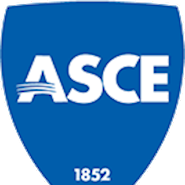Reduce conflict and avoid litigation.
The Engineers Joint Contract Documents Committee, sponsored in part by ASCE, has released the 2023 Construction Manager at Risk Series, a comprehensive new set of 27 documents – including contracts, bonds, contractor-procurement documents, and administrative forms – intended for use on projects in which the owner retains a construction manager at risk to provide preconstruction services and then construct the project.
The EJCDC is a collaborative group, co-sponsored by ASCE, the American Council of Engineering Companies, and the National Society of Professional Engineers. The new series of documents is available for purchase and download at the ASCE website.
The construction manager at risk project delivery method evolved from traditional design-bid-build by involving the construction contractor early in the project. The CMAR delivery process adds value by—
- Employing the contractor early in the design process to perform constructability reviews, advise on material availability and selection, assess risk factors and mitigating strategies, develop procurement strategies, and organize the work into efficient work packages.
- Taking advantage of opportunities for early procurement of materials and equipment, especially in volatile markets.
- Starting construction before the design of the entire project is complete; often known as fast-tracking.
“Collaborative project delivery has been available to public owners for some time, and while different organizations have written model documents for design-build, there are few industry-standard documents for construction manager at risk for infrastructure projects,” said Coy M. Veach, P.E., F.ASCE, vice president, Freese and Nichols Inc. in Mansfield, Texas, and chair of the EJCDC’s CMAR subcommittee.
“Most CMAR documents we see in use are modifications of hard-bid construction documents that do not take advantage of the benefits offered by the construction manager at risk delivery system.”
The new EJCDC CMAR series is suitable for both public and private work. The series features several documents used for the project owner’s selection of CMAR, such as a model request for qualifications, statement of qualifications, and a request for proposals.
The new documents emphasize organizing the construction into distinct work packages, and the use of fast-tracking through individual work authorizations. The contract price develops as work is authorized, using CMAR‑545, and the CMAR obtains bids from subcontractors (or agrees to self-perform work at competitive prices).
The committee began work on the contract documents before the COVID pandemic struck. But, remarkably, their value to project owners and construction engineers has arguably only increased in the 2023 landscape.
“In today’s construction market we are dealing with material cost escalation, supply chain issues, limited resources, and the need for better control of risk by both owners and contractors,” Veach said.
“Projects are more expensive to build, and owners are competing to make their projects more attractive to potential builders. CMAR allows owners to work collaboratively with contractors to identify and mitigate risk in ways not possible with traditional project delivery.
“While CMAR is not the right delivery system for all projects, it offers advantages that are more important now than in any time in the past.”
Learn more about the 2022 Construction Manager at Risk Series.



